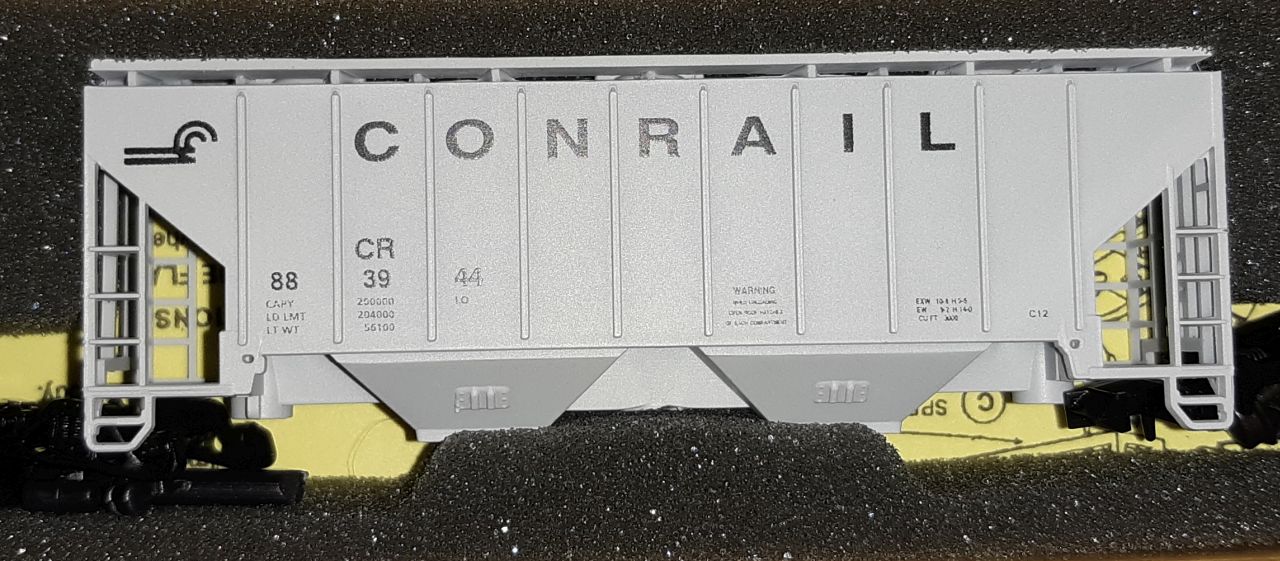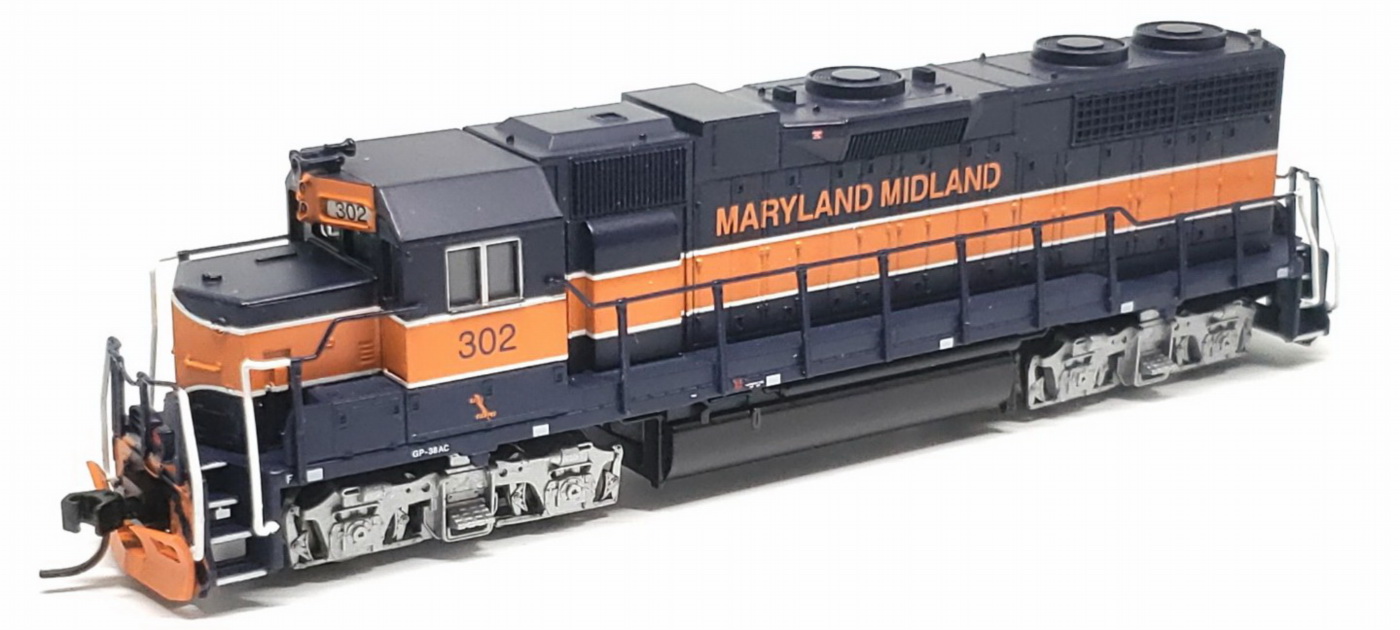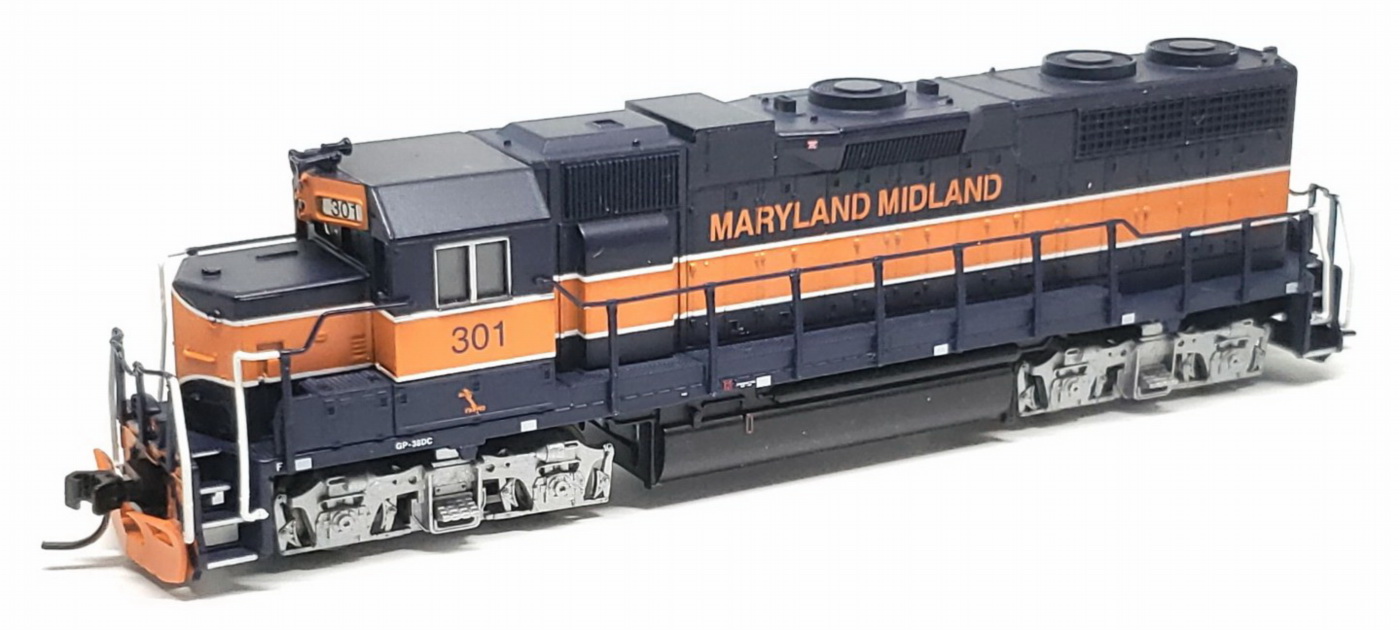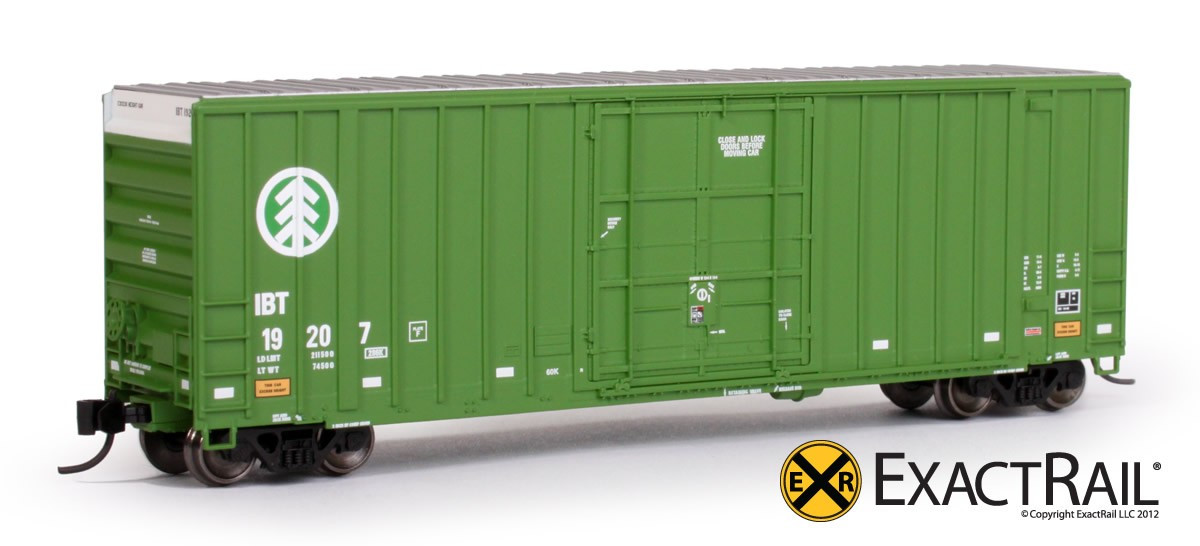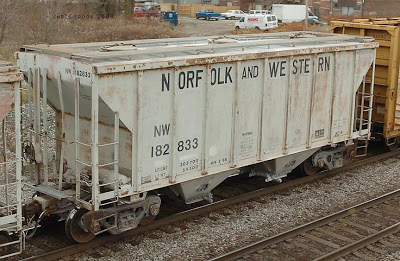Model Information: Precision Masters first released this body style in kit form. Later on, they released the same body as a RTR (Ready-to-Run) model. In 2005, Red Caboose acquired this tooling from PM. Red Caboose released this model in RTR form. Fox Valley acquired the tooling from Red Caboose in 2015. As of 2017, Fox Valley has not yet re-released cars from this tooling, but if they do, likely it will be with body mount couplers and their famous metal wheels.
Prototype History: 3000 Cu.Ft. 2-Bay Hoppers like this one or similar to it have been made by Greenville Car Co., Pullman Standard and Trinity Industries Inc. The first 3000 Cu.Ft. Hopper design first appeared in service in the mid-60s, and can still be found in service by many railroads today. Commodities carried include, but are not limited to, cement, flour, drilling sand, sand, sugar and other 'heavy' commodities. The car can also be used for lighter commodities especially when smaller volumes are being transported and the cost of a larger capacity car is not justified. This design typically features rib sides and top hatches along the central axis with a roofwalk around perimeter of the top.
Road Name History: The Consolidated Rail Corporation, commonly known as Conrail (reporting mark CR), was the primary Class I railroad in the Northeast U.S. between 1976 and 1999. Conrail is a portmanteau of "consolidated" and "rail" from the name of the company.
The U.S. federal government created Conrail to take over the potentially profitable lines of multiple bankrupt carriers, including the Penn Central Transportation Company and Erie Lackawanna Railway. With the benefit of industry-wide regulatory requirements being reduced (via the 4R Act and the Staggers Act), Conrail began to turn a profit in the 1980s and was turned over to private investors in 1987. The two remaining Class I railroads in the East, CSX Transportation and the Norfolk Southern Railway (NS), agreed in 1997 to split the system approximately equally, returning rail freight competition to the Northeast by essentially undoing the 1968 merger of the Pennsylvania Railroad and New York Central Railroad that created Penn Central. Following Surface Transportation Board approval, CSX and NS took control in August 1998, and on June 1, 1999, began operating their portions of Conrail.
The U.S. federal government created Conrail to take over the potentially profitable lines of multiple bankrupt carriers, including the Penn Central Transportation Company and Erie Lackawanna Railway. With the benefit of industry-wide regulatory requirements being reduced (via the 4R Act and the Staggers Act), Conrail began to turn a profit in the 1980s and was turned over to private investors in 1987. The two remaining Class I railroads in the East, CSX Transportation and the Norfolk Southern Railway (NS), agreed in 1997 to split the system approximately equally, returning rail freight competition to the Northeast by essentially undoing the 1968 merger of the Pennsylvania Railroad and New York Central Railroad that created Penn Central. Following Surface Transportation Board approval, CSX and NS took control in August 1998, and on June 1, 1999, began operating their portions of Conrail.
Brand/Importer Information:  Precision Masters was founded in 1984 by Bob Byers as a part-time operation. Initially the company was focused on producing a new coupler type that was compatible with Kadee/MTL couplers but had more accurate dimensions. After two years, in 1986, PM released their first entry into Rolling stock with the 5-Bay Ortner Open Hopper. Eventually, their product line grew to comprise 11 different body styles.
Precision Masters was founded in 1984 by Bob Byers as a part-time operation. Initially the company was focused on producing a new coupler type that was compatible with Kadee/MTL couplers but had more accurate dimensions. After two years, in 1986, PM released their first entry into Rolling stock with the 5-Bay Ortner Open Hopper. Eventually, their product line grew to comprise 11 different body styles.
Bob's goal with the PM product line was to produce an alternative to the current (1980s) manufacturers releases. At that time, Micro-Trains/Kadee was known for excellent quality models with accurate scale details and high quality printing. All the others produced somewhat clunky models with inaccurately scaled roofwalks, brake wheels, stirrups, ladders and other details. The goal at PM was to produce a close-to-Kadee quality model at a lower price point. One of the ways PM accomplished this was releasing their models in 'easy-build" kit form.
Bob sold substantially all of PM's assets to Red Caboose in March of 1998. Fortunately, Red Caboose continued to release these models until they also sold their assets to Fox Valley Models. Again fortunately, we continue to see releases of these excellent quality models via Fox Valley with InterMountain trains helping with distribution.

Bob's goal with the PM product line was to produce an alternative to the current (1980s) manufacturers releases. At that time, Micro-Trains/Kadee was known for excellent quality models with accurate scale details and high quality printing. All the others produced somewhat clunky models with inaccurately scaled roofwalks, brake wheels, stirrups, ladders and other details. The goal at PM was to produce a close-to-Kadee quality model at a lower price point. One of the ways PM accomplished this was releasing their models in 'easy-build" kit form.
Bob sold substantially all of PM's assets to Red Caboose in March of 1998. Fortunately, Red Caboose continued to release these models until they also sold their assets to Fox Valley Models. Again fortunately, we continue to see releases of these excellent quality models via Fox Valley with InterMountain trains helping with distribution.
Item created by: maurice.grimes06 on 2020-06-04 22:31:35. Last edited by baggedbird on 2023-11-17 18:24:19
If you see errors or missing data in this entry, please feel free to log in and edit it. Anyone with a Gmail account can log in instantly.
If you see errors or missing data in this entry, please feel free to log in and edit it. Anyone with a Gmail account can log in instantly.


